The Tibbetts Point Lighthouse
A GUIDING LIGHT WHERE LAKE AND RIVER MEET
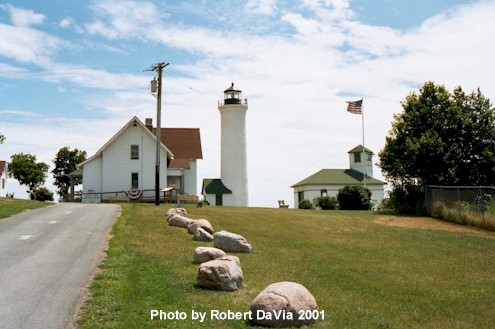
The Tibbetts Point Lighthouse marks the entrance to the safe waters of the
St. Lawrence River, and refuge from the often-treacherous open lake.
The view from Tibbetts Point is a local treasure,
offering a look at the lands of two Nations, and ocean going vessels from around the
world.
The following is from a Tibbetts Point Lighthouse Historical
Society brochure.
This point of land was part of 600 acres patented to Captain John
Tibbett of Troy, New York, and to which he gave his name.
In
1827, three acres surrounding the point were deeded to the United States Government and a
lighthouse erected there.
The first lamps for the
59-foot tower were fed by whale oil, and in the mid 1850’s, the United States
Government changed it to lard oil.
In 1854, the
original structure was replaced by the circular tower of today – standing 69-feet
above the water.
At that time, 50 candlepower oil
lamps of fixed beam were used and equipped with a Fresnel Lens brought from France.
In 1930, electrically operated lights were installed,
using 61-candlepower.
The light was designated of
the fourth order, and flashed white with characteristics of 10 seconds: 6 seconds flash
and 4 seconds eclipse.
In 1960, the lamp was changed to 500 watt which made it 15,000
candlepower, and is visible 16 miles.
These lamps
burn about twice as long as the previous ones – 2,000 hours.
With all the changes in lamps, the Fresnel Lens has
remained the same.
The fog whistle was added in 1896 being operated by steam.
In 1927, that whistle was replaced by an air-diaphone
which was operated by a diesel engine with the blasts automatically timed.
This whistle could be heard for a distance of 4 to 5
miles, although with atmospherics it could be heard, from time to time, at a greater
distance.
In 1972 the fog whistle was discontinued
in favor of a new radio beacon which guides ships traversing the lake and river.
In the 1880’s, lighthouses were under the management of the
United States Lighthouse Board, which was part of the Treasury.
Naval and Army Corps of Engineer officers were assigned
to the Board and managed the districts. The
Lighthouse Board was placed under the new Commerce Department.
In 1910 the Board was disbanded, and the civilian Bureau
of Lighthouses was created, still under Commerce.
For
more than half a century, the Montonna family (civilians) kept the Tibbetts Point
Lighthouse.
David was allowed to operate the
lighthouse until he retired, as the Coast Guard allowed other civilians to do.
William Montonna, David’s son, took over as keeper
until he also retired in 1937.
Olin W. Stevens was
next in line at the lighthouse, and Edward Sweet was the last civilian Light Tender. In
1939, the Coast Guard officially took over the operation of the lights in the area.
Ruben Howard being the first in that line of duty.
Officially in May 1981, the Coast Guard left the lighthouse, and the
living quarters at Tibbetts Point were closed.
However,
the Coast Guard still administers the light towers with automation operations coming from
Oswego.
During 1983, transactions were under way
with the American Youth Hostel, and in 1984, the caretakers house was opened as a Youth
Hostel.
In March 1988, the new Tibbetts Point Lighthouse Historical Society
was formed by Shirley Hamblem, for the purpose of restoring and preserving the lighthouse
and its grounds as a historical and educational entity for the public to enjoy for
generations to come.
Tibbetts Point Lighthouse Historical Society
Box 683
Cape Vincent, NY 13618
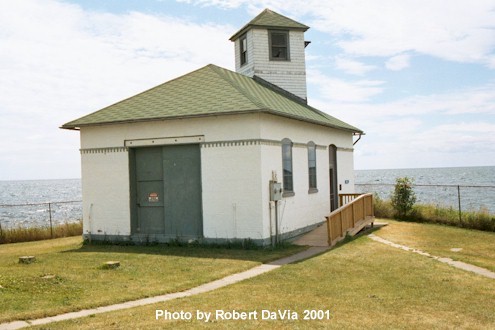
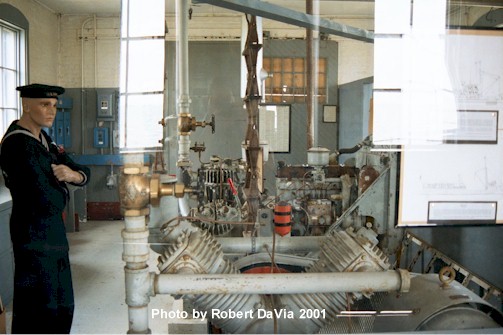
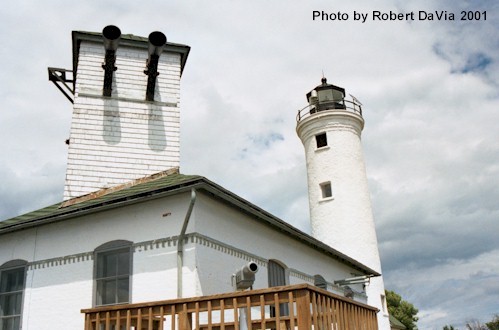
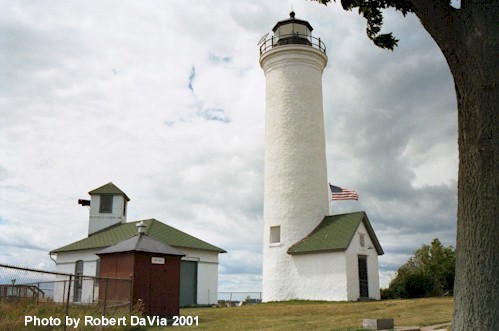
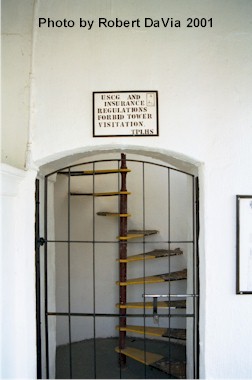
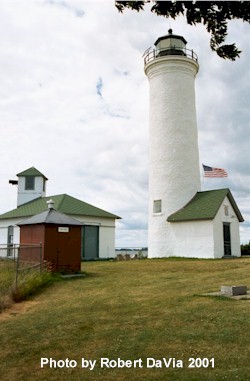
Return to
the New York State Page
Return to the: Alphabetical Listing or the Listing by States








